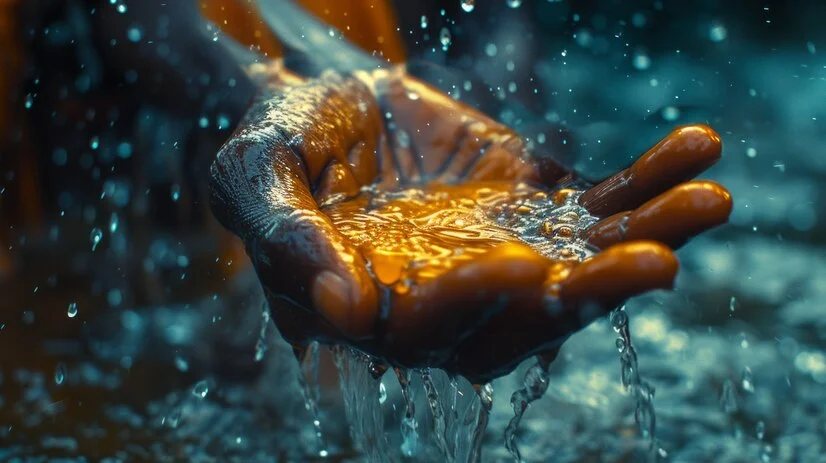Introduction: The Global Water Conservation and Its Impact on the Middle East and Asia
Water scarcity is one of the most pressing global challenges of our time, and the Middle East and Asia are particularly vulnerable. These regions face growing populations, increasing agricultural demands, and the threat of climate change. As water resources become scarcer, countries are turning to innovative solutions to ensure a sustainable future.
Water is essential for life, but its distribution across the globe is far from equal. The Middle East and parts of Asia are considered water-stressed regions, with limited natural freshwater resources. This has prompted governments, organizations, and businesses to explore new technologies and strategies to conserve water and address growing demands.
Key Drivers of Water Scarcity in the Region
Several factors contribute to the water scarcity crisis in the Middle East and Asia. These include:
- Climate Change: Rising temperatures and altered rainfall patterns reduce the amount of freshwater available for agriculture and human consumption.
- Population Growth: Rapid urbanization and increasing populations put pressure on water supplies, particularly in cities.
- Agriculture Demand: Agriculture consumes a significant portion of water resources in both regions. Inefficient irrigation practices waste large amounts of water, exacerbating the problem.
- Pollution: Industrial growth and inadequate waste treatment systems result in the contamination of freshwater sources, further reducing the supply of clean water.
These factors combined create a serious challenge. However, countries in the Middle East and Asia are not backing down. Instead, they are adopting groundbreaking innovations to address water scarcity head-on.
Cutting-Edge Technologies in Water Conservation
In the face of water scarcity, new technologies have become game-changers. Countries in the Middle East and Asia are leading the way with innovative solutions to conserve and efficiently manage water resources.
Desalination Advances
Desalination, the process of converting seawater into freshwater, has become one of the most important innovations for water-scarce regions. The Middle East, especially countries like Saudi Arabia and the UAE, is a global leader in desalination technology.
Recent advancements in desalination have made the process more energy-efficient and cost-effective. New techniques, such as reverse osmosis and multi-effect distillation, have significantly improved desalination efficiency. These innovations help provide a reliable and clean water supply to areas where natural freshwater is scarce.
Water Recycling and Reuse
Recycling and reusing wastewater is another crucial strategy in water conservation. Many countries in Asia, like Singapore and Japan, have invested heavily in water treatment facilities that recycle water for non-drinking purposes, such as irrigation, industrial use, and cooling.
Singapore’s NEWater initiative is a prime example. This program involves treating and purifying wastewater to a high standard, making it safe for reuse in industries and even for drinking in certain circumstances. This approach not only conserves water but also reduces dependence on imported water.
Smart Irrigation Systems
Smart irrigation technologies are revolutionizing the way agriculture uses water in the Middle East and Asia. These systems use sensors, weather data, and automated controls to apply water only when and where it’s needed. This minimizes water wastage and ensures that crops receive the right amount of water for optimal growth.
For instance, in Israel, a pioneer in water-efficient agriculture, drip irrigation has transformed farming practices. This method delivers water directly to the roots of plants, reducing evaporation and runoff. The technology has been adopted across the Middle East and parts of Asia, helping farmers maximize crop yields while conserving water.
Government Initiatives and Policies
Governments in the Middle East and Asia are playing a crucial role in addressing water scarcity through policy and regulation. Many countries are enacting policies that prioritize water conservation, efficiency, and sustainability.
The UAE government has set ambitious goals to reduce water consumption by 30% by 2030. In addition to funding desalination projects, the government is implementing policies that encourage the use of recycled water and the adoption of smart irrigation systems.
In India, the government has launched several initiatives to address water scarcity, including the National Water Mission, which aims to promote water conservation practices across the country. Through public awareness campaigns and the promotion of water-saving technologies, India is making significant strides in improving water management.
Private Sector Contributions and Collaborations
The private sector has also stepped up in the fight against water scarcity. Many companies are investing in innovative water technologies and collaborating with governments and NGOs to address the issue.
One notable example is the partnership between the Dubai Electricity and Water Authority (DEWA) and private companies to develop large-scale desalination plants powered by renewable energy. This collaboration is helping reduce the environmental impact of desalination while ensuring a sustainable water supply.
In Asia, tech giants like Samsung and Panasonic have developed water-saving technologies that are being implemented in both urban and rural areas. These companies are leading the charge in creating solutions that not only conserve water but also improve overall water management efficiency.
Case Studies: Success Stories from the Middle East and Asia
UAE: Pioneering Water Sustainability
The UAE has emerged as a global leader in water sustainability. With its vast deserts and minimal freshwater resources, the UAE has invested heavily in innovative water conservation technologies.
One standout example is the use of solar-powered desalination plants, which are helping reduce the cost and environmental impact of producing freshwater. These plants are part of a larger effort to make the UAE’s water supply more sustainable and less dependent on fossil fuels.
India: Tackling Scarcity with Technology
India is also making significant strides in water conservation through technology. The country has adopted innovative irrigation methods, such as micro-irrigation and drip irrigation, to conserve water in its agriculture sector.
In addition, India has launched the “Jal Jeevan Mission,” a project aimed at providing clean water to rural households. This initiative focuses on water conservation, rainwater harvesting, and the promotion of water-efficient practices across the country.
The Role of Education and Awareness in Water Conservation
Education and public awareness are essential components of successful water conservation efforts. In both the Middle East and Asia, governments and NGOs are working to educate people about the importance of water conservation.
In many countries, schools and community organizations are leading water-saving initiatives, teaching children and adults about the value of water and how they can contribute to its conservation. These efforts are helping change public attitudes toward water usage, leading to more sustainable behaviors.
Challenges and Future Outlook
While there have been significant advancements in water conservation technologies, challenges remain. Desalination, for example, is still an energy-intensive process that can have environmental impacts if not managed properly. Additionally, the large-scale adoption of water-saving technologies requires substantial investment and infrastructure development.
However, the future looks promising. As technology continues to advance and more countries commit to water conservation, the prospects for addressing water scarcity in the Middle East and Asia improve. With continued innovation and collaboration between governments, the private sector, and communities, these regions can build a more water-secure future.
Conclusion: Moving Towards Sustainable Water Management
The Middle East and Asia are at the forefront of the global battle against water scarcity. Through innovative technologies, government policies, and private sector collaboration, these regions are showing the world how to tackle one of the most critical challenges of our time.
As nations continue to invest in water conservation, the hope is that these innovations will inspire other parts of the world to adopt similar solutions. With sustainable water management at the core of their strategies, the Middle East and Asia are leading the way toward a more water-secure future.


